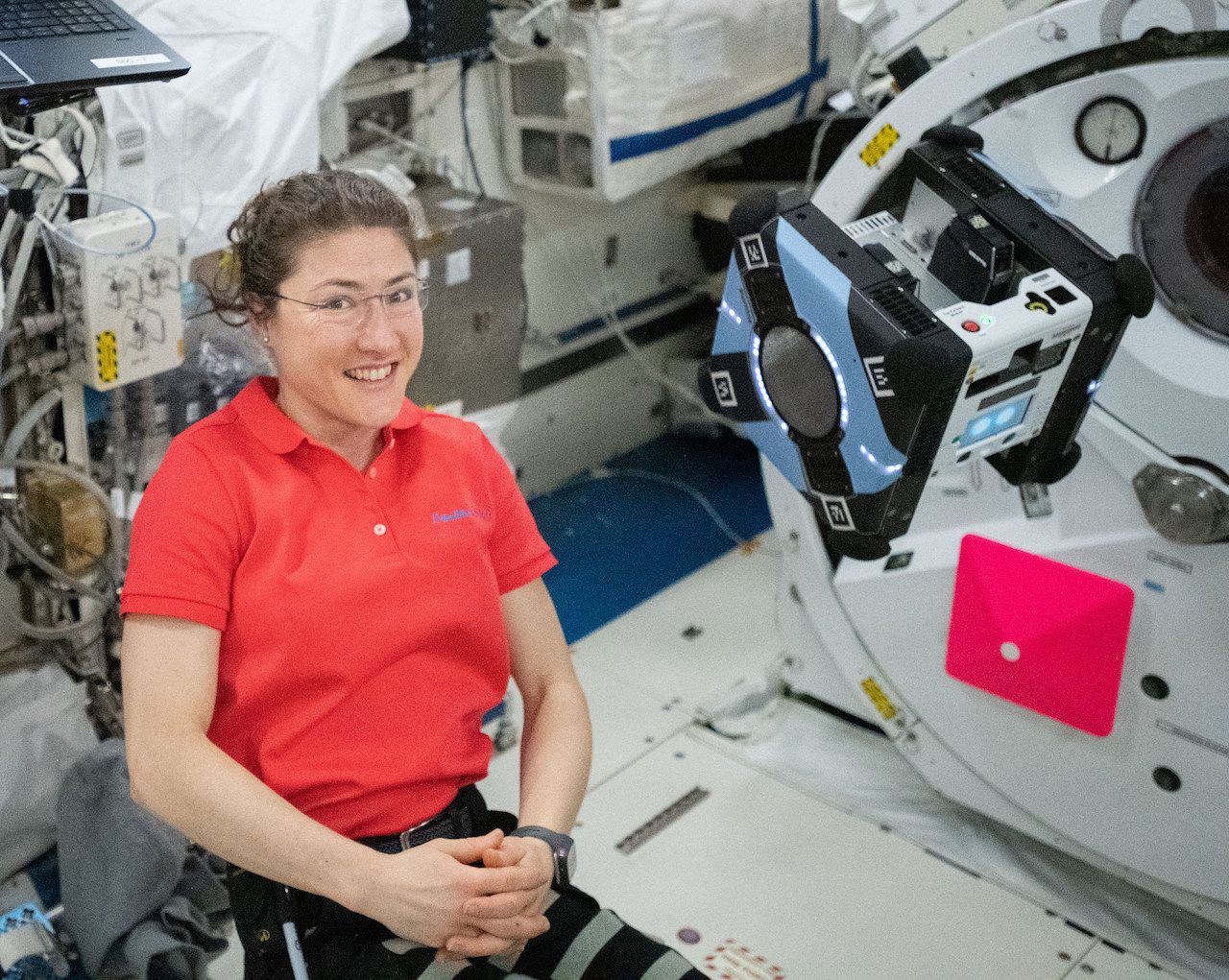Watch Astrobee's First Autonomous Flight on the International Space Station
NASA's Astrobee robots have come a long, long way since we first met them at NASA Ames back in 2017. In fact, they've made it all the way to the International Space Station: Bumble, Honey, and Queen Bee are up there right now. While Honey and Queen Bee are still packed away in a case (and quite unhappy about it, I would imagine), Bumble has been buzzing around, getting used to its new home. To be ready to fly solo, all Bumble needed was some astronaut-assisted mapping of its environment, and last month, the little robotic cube finally embarked on its first fully autonomous ISS adventure.
We cut together the above video from about an hour's worth of raw footage (without audio) of Astrobee testing, which took place in the Japanese Experiment Module (JEM), also known as Kibo, on the ISS on August 28. Astronaut Christina Koch had been working with roboticists at NASA Ames on earlier Astrobee start-up activities, which hadn't gone as perfectly as everyone hoped they would, and was (understandably) excited that the robot was able to successfully fly itself though the JEM. Christina and another astronaut, off camera in the Harmony node attached to the JEM, do a little dance to celebrate (with what is now officially the "Astrobee Jig," we're told), and apparently Astrobee now has a standing invitation to join in on all future ISS dance parties.
 Photo: NASA/JSC Expedition 60 flight engineer Christina Koch of NASA works inside Japan's Kibo laboratory module monitoring a mobility test of the free-flying Astrobee robotic assistant.
Photo: NASA/JSC Expedition 60 flight engineer Christina Koch of NASA works inside Japan's Kibo laboratory module monitoring a mobility test of the free-flying Astrobee robotic assistant. Astrobee's goal for its first autonomous mission was to undock itself, follow a flight plan consisting of a list of waypoints and objectives that was uploaded to the robot from the ground, and then return to the dock. All of this was done without any direct intervention from the ground controllers or from the astronauts. As you can see in the video, Christina is mostly just following Bumble around as it does its thing, keeping out of the way of the navigation camera but otherwise just making sure the robot didn't get into any trouble.
How Astrobee flies itselfSo far, the difficult part for Astrobee has been getting its localization to work robustly. While the robot does navigate visually, it's dependent on preexisting maps rather than doing SLAM. Putting together those initial maps involved hand-carrying Bumble around the JEM to collect images, which were then processed offline (back on Earth) to identify features in the images and correlate them with locations to build up the map that Bumble uses to navigate.
With maps like these, you have to find the right mix of features to include for navigation to work optimally. If your maps are too rich in features, there will be too much data for your robot to manage, and if the maps are too sparse, the robot won't be able to localize accurately. This was a little bit tricky for Astrobee, as deputy group lead Maria Bualat from the Intelligent Systems Division at NASA Ames explained to us:
It turned out that our maps needed to be richer. We tried to cull them down to make them fast and efficient, but we weren't keeping enough features to enable the robot to localize robustly, so it would get lost a lot. During some of our earlier activities when we were trying to fly even basic motions, the robot would tend to drift as it would lose lock. This last activity that we had was great, because it was our first time using the more enriched map, and the localization worked really well. It was kind of nice because [Christina] saw us through those struggles-she saw how tough it was to get the robot to fly.
Besides this little bit of software optimization, Bualat says that Astrobee has been working well, without any other software issues or hardware issues of any kind. This is impressive for any robot, and especially so for a robot that was developed entirely on the ground and is now being used in space. And as for the astronauts whose job it is to test Astrobee, it sounds like they're actually having some fun with it. There was a bit of concern initially that Astrobee's impellers would be overly loud, but that might be a feature rather than a bug, as Bualat explains: "We've asked them if they found it noisy or annoying, and they said no-in fact, they said that you can certainly hear it, but they actually liked it because it means that Astrobee can't sneak up on them."
Astrobee will be continuing its commissioning activities over the next few months, which includes tuning Bumble so that it can fly as robustly as possible. For example, Astrobee needs to be able to navigate if an astronaut moves in front of its navigation camera, blocking some of the view. Bumble will then get its perching arm installed and tested, after which the goal is to start working with some of the science payloads, like a gecko gripper, a RFID tracker, and a microphone array, which you can read more about here and here. Honey and Queen still need to go through their own start-up tests and calibrations, and Maria Bualat says the goal is to have multiple Astrobees buzzing around the ISS together "not too far in the future."
[ Astrobee ]